Unveiling the Real Potential of CTV for Marketers: Moving Beyond the Hype
PUBLISH DATE: 20 November 2023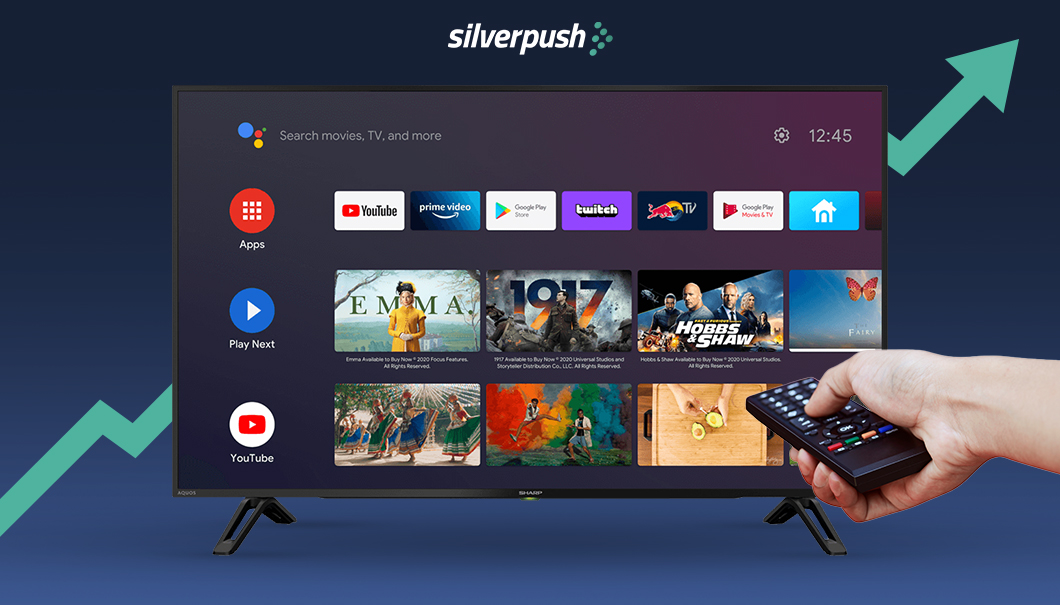
As consumers increasingly shift from traditional linear television to streaming services, marketers are recognizing the significant potential of addressable advertising in Connected TV (CTV). This shift allows for the delivery of tailored ads to different streaming viewers based on their audience persona, leading to more effective results in specific segments and facilitating advanced attribution.
Despite the growing enthusiasm for CTV advertising, it remains a relatively new channel for marketers. Understanding how inventory is bought, sold, and tracked on this platform is crucial. The deals in the CTV space that are most favorable to buyers need to be identified. Additionally, exploring the current state of CTV CPMs (cost per thousand impressions) is essential for marketers to make informed decisions.
To navigate the landscape of CTV ad inventory effectively, it’s crucial to delve into the factors influencing pricing in the channel. By gaining insights into attribution goals and challenges associated with CTV, marketers can strategically position their brands to capitalize on the emerging opportunities in this format. In the coming year, attention should be focused on key aspects of the CTV landscape to maximize the benefits for marketers.
Predicted growth of Connected TV Ad Spend in 2024
As we approach 2024, “Connected TV ad spend” has become the buzzword in the advertising realm, and for good reason. Anticipated trends suggest a significant surge in Connected TV ad spend, reshaping the landscape for advertisers and businesses.
Consider the following insights:
Prediction 1: According to a recent forecast by eMarketer, the projection for CTV ad spend in 2024 is an impressive $14.12 billion, marking a substantial increase from the $9.36 billion recorded in 2021.
Prediction 2: The same report indicates that the share of CTV ad spend in total TV ad spend is expected to climb to 44.6% by 2024. This signifies a notable shift in advertising strategies, with businesses increasingly favoring Connected TV advertising over traditional TV advertising.
The driving force behind this surge lies in evolving consumer behavior. The prevalence of over-the-top (OTT) media services such as Netflix and Hulu has led more consumers to transition from traditional TV to Connected TV. This shift creates a plethora of opportunities for advertisers to connect with a broader and more engaged audience, contributing to the predicted uptick in connected TV ad spend in 2024.
However, it’s crucial to emphasize that, with this newfound power, advertisers must wield it responsibly. While the rise in CTV ad spend is exciting, the focus should not merely be on spending but on spending wisely, adapting strategies to align with the evolving landscape.
How Advertisers can Leverage the CTV Surge?
Preparing for the surge in Connected TV (CTV) ad spend requires strategic planning. Here’s a guide to help advertisers capitalize on this opportunity:
Know Your Audience:
Start by understanding your target audience. Identify their interests, preferences, and viewing habits. This knowledge will serve as the foundation for your ad strategy, ensuring that your advertisements effectively resonate with your intended viewers.
Personalize Your Ads:
Harness the potential of CTV by creating personalized ads that cater to individual users. Tailor your content to speak directly to your audience, emphasizing the importance of relevance in your advertising efforts.
Leverage Data:
Utilize data from past campaigns to inform your future strategies. Analyze what worked well and what didn’t. By learning from both successes and mistakes, you can refine your approach and optimize your advertising efforts.
Test and Learn:
Given that CTV advertising is still in its early stages, there’s ample room for experimentation. Be bold in trying out different approaches to see what resonates best with your audience. Embrace a test-and-learn mentality to refine your strategies over time.
Stay Nimble:
The landscape of CTV advertising is evolving rapidly. Stay attuned to industry trends and be ready to adapt your strategies accordingly. Being nimble and responsive to changes will position your advertising efforts for continued success.
Also read: How Silverpush Ensures Brand Safety in CTV Advertising?
In conclusion, the anticipated increase in CTV ad spend presents a unique opportunity for advertisers. To make the most of this golden opportunity, it’s essential to stay informed, remain flexible, and always prioritize understanding and connecting with your audience. Are you ready to seize the moment? Contact us to get started with CTV advertising.
The Dawn of a New Advertising Era: 5 CTV Advertising Trends for 2024
PUBLISH DATE: 16 October 2023
The advertising industry, particularly Connected TV (CTV), has witnessed remarkable growth in 2023, poised to exceed the global revenue milestone of $25 billion. This surge can be attributed to several key factors:
Firstly, the surging popularity of Connected TV has been remarkable. Recent studies indicate a 20% increase in CTV consumption among U.S. households, totaling a staggering 11.5 billion hours from May 2022 to May 2023.
Secondly, CTV advertising offers unparalleled targeting capabilities. Brands can now tailor their advertisements to particular audiences, leveraging demographic, interest, and behavior-based targeting. This precision sets CTV advertising apart from traditional TV advertising, which often reaches a more generalized audience.
Lastly, CTV advertising proves to be cost-effective. Advertisers benefit from the ability to precisely target their desired audience and measure the results with greater accuracy.
As we approach 2024, the future of CTV advertising trends holds great promise. To echo the sentiment, Ernest Hemingway once said, “New Year – A new beginning. And things will be better than ever before, you’ll see.”
Trends that will rule the Connected TV landscape in 2024
1. Uninterrupted Rise: CTV Viewership Continues to Surge
According to a renowned market research company, CTV households will be more than double the households with linear TV. 87 percent of American households with televisions had a device that can connect to the internet. This includes smart TVs, streaming devices like Roku and Amazon Fire TV, video game systems, and Blu-ray players3. Furthermore, the number of CTV users among generations is constantly increasing.
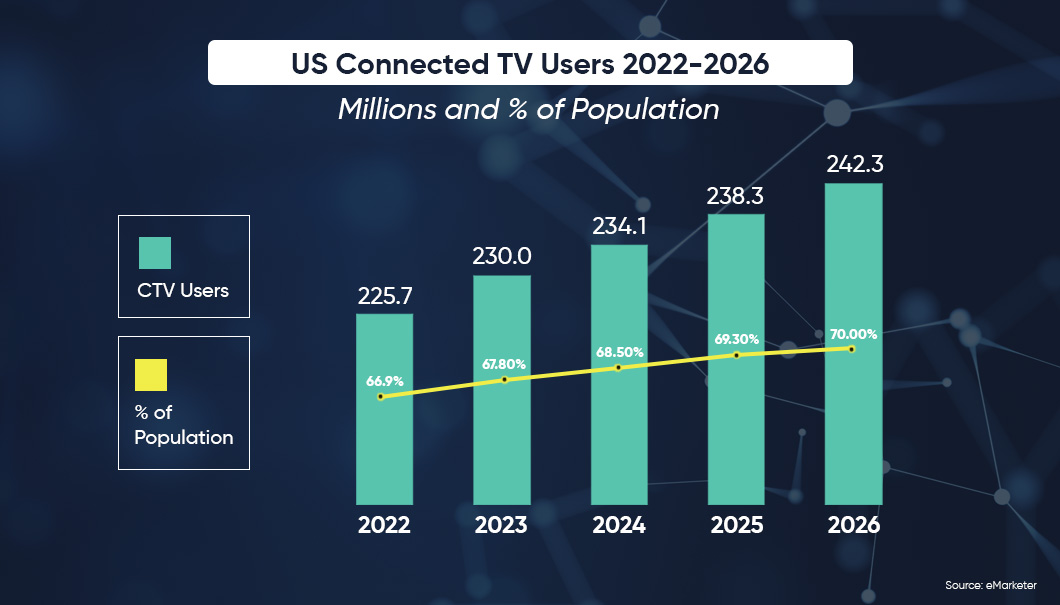
2. Precision Targeting Fuels Programmatic CTV Advertising Spend Surge
In 2023, it was anticipated that connected TV advertising spending in the U.S. would reach approximately $25.09 billion. It is evident that CTV ad expenditure is on track to expand to approximately $29.29 billion by 2024 and a substantial $36.86 billion by 2026. The primary driving force behind this remarkable surge can be attributed to the widespread adoption of streaming services by users.
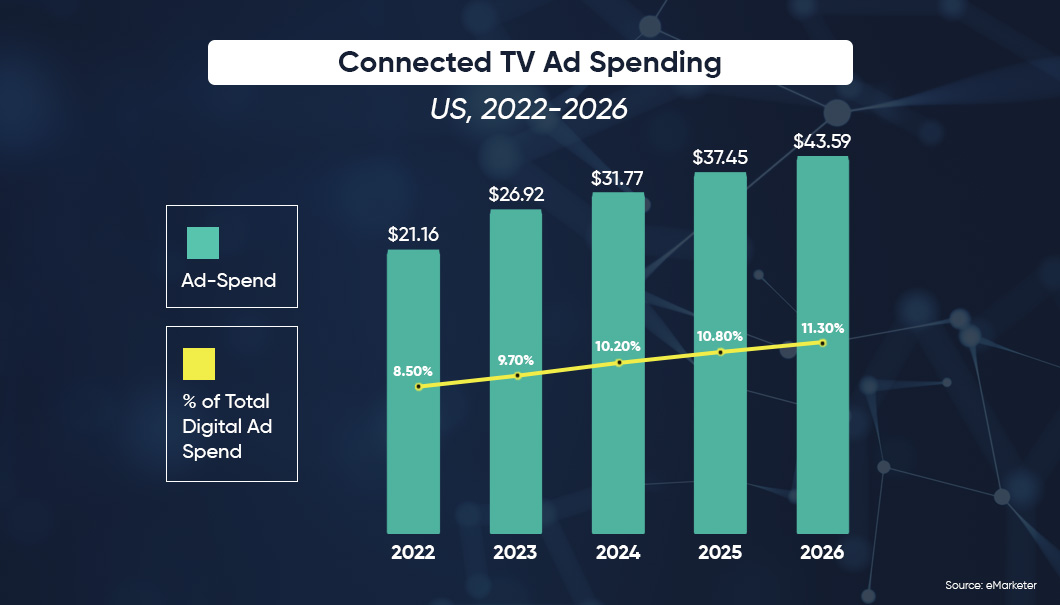
3. Enhanced Targeting on CTV Takes Center Stage
Connected TV (CTV) advertising offers advertisers a powerful tool for tailoring their ads to specific audience segments. This precision allows advertisers to deliver highly relevant ads to viewers, significantly boosting the likelihood of engagement and conversions. A survey done by the IAB found that 84 percent of advertisers think that CTV offers better targeting options in comparison to regular TV.
In 2024, brands can expect more sophisticated audience segmentation to deliver highly personalized and relevant ads.
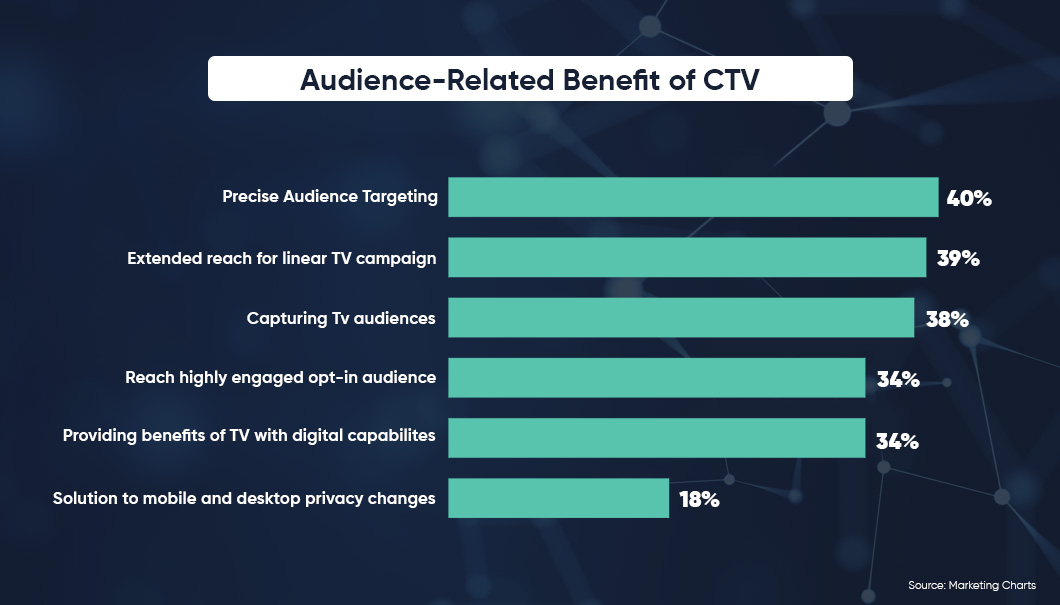
4. Elevated Engagement: Shoppable CTV Ads and Enhanced Interactivity
Shoppable ads are becoming increasingly popular as more and more consumers shop online, according to the latest CTV shopping trends. They offer a number of benefits for both consumers and businesses. For consumers, it shortens the consumer journey as they are able to make direct purchases for the products they are interested in. For businesses, shoppable ads can help to increase sales and brand awareness. They can also help businesses to learn more about consumer behavior.
Some formats that advertisers can leverage are:
- Product showcases: Highlight the relevant elements/features of the product that users can access with a tap.
- QR codes: Nothing beats the curiosity to know something and QR codes are the best curiosity generators. Advertisers can include QR codes or short links in ads, allowing viewers to scan or click for immediate access to the product page or a special promotion.
- Voice-activated purchases: Due to the growing use of voice-activated gadgets, advertisers can utilize voice commands in ads that allow viewers to make purchases or add products to their shopping lists using voice assistants, making shopping easier.
5. Integration of CTV with Cross-Channel Campaigns
CTV will increasingly become a central component of cross-channel advertising strategies. According to a study conducted by Digiday, respondents found one of the appealing aspects of CTV advertising to be its ability to integrate into an existing omnichannel strategy seamlessly.
The integration of CTV with cross-channel campaigns is a powerful way for advertisers to reach their target audiences more effectively and to measure the effectiveness of their campaigns across all channels.
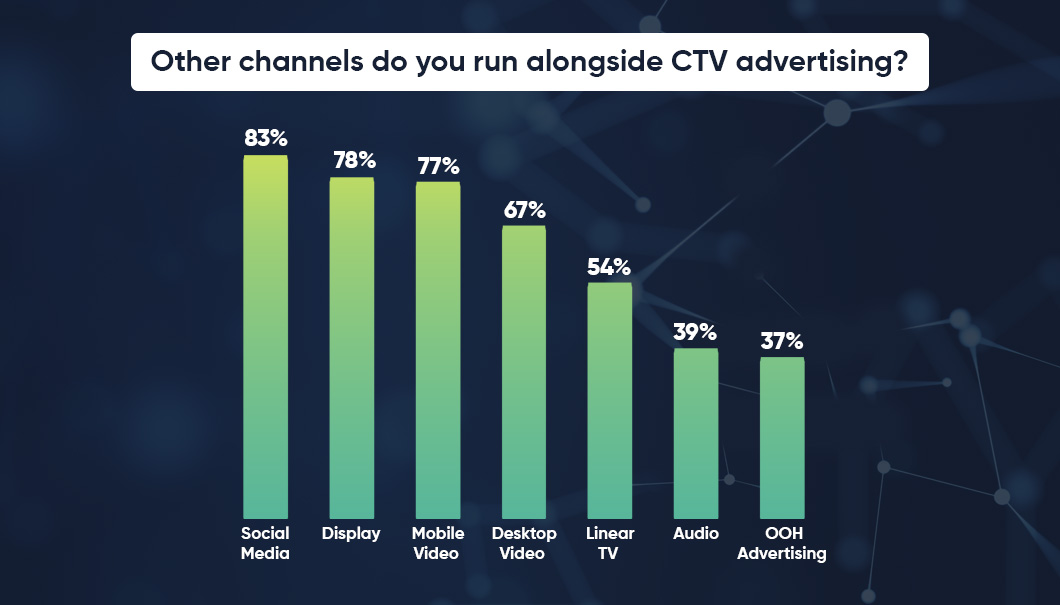
Here are some of the benefits of integrating CTV with cross-channel campaigns:
- Increased reach: This will allow advertisers to reach their target audiences on a variety of devices, including smart TVs, streaming sticks, and gaming consoles.
- Improved relevance: Advertisers will be able to target their ads based on demographics, interests, and behaviors, which can help to improve the relevance of their ads to viewers.
- Greater efficiency: CTV integration can help advertisers reach their target audiences more efficiently, which can lead to lower costs and higher ROI.
- Better measurement: CTV integration allows advertisers to measure the results of their campaigns more accurately, which can help them improve their performance over time.
Conclusion
In light of the gradual decline in linear TV advertising, CTV advertising trends research indicates that within the next four years, there will be a substantial decrease of $4.48 billion in US linear ad spending, while CTV is projected to witness a significant increase of $15.81 billion.
With advanced targeting capabilities and seamless integration with other platforms, predictions paint a promising and prosperous future for CTV ads. As such, advertisers would be wise to explore this platform’s full potential.







